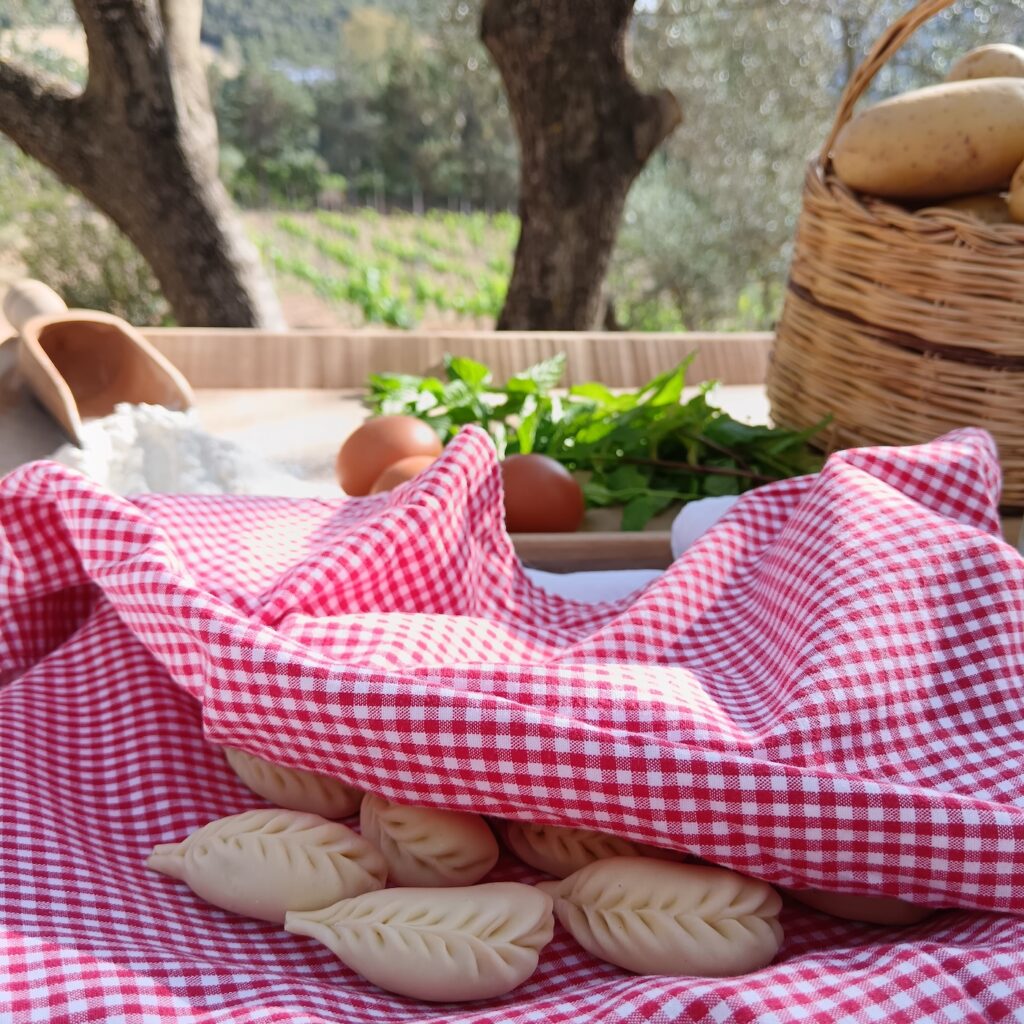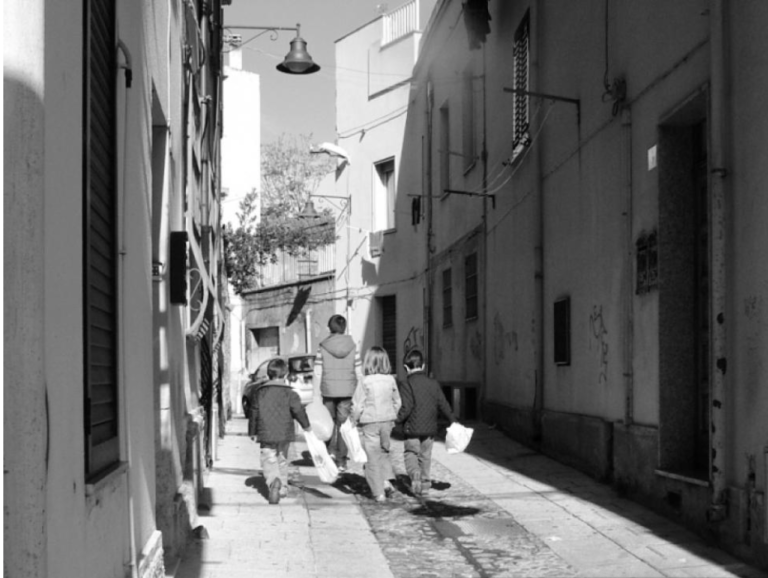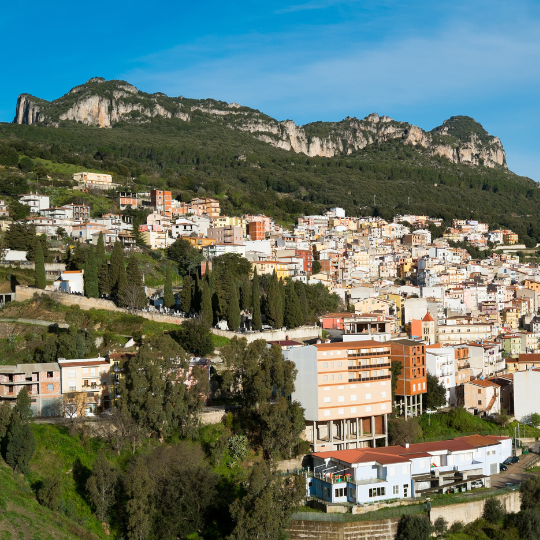Ogliastra’s Culurgiones are so much more than just filled pasta. They carry within them a piece of our history, born from a deep-rooted bond with the land and its people. Each time you sit down to a plate of Culurgiones, it’s like stepping back in time—a journey through ancient traditions and rituals that have shaped who we are.
Picture yourself amidst the rolling hills of Ogliastra, where the breeze carries the scent of wild myrtle and juniper. It’s in this untamed and enchanting landscape that Culurgiones were first brought to life. They’re not just a delight for the taste buds; they symbolise fertility, abundance, and protection. For us Sardinians, these little bundles of joy are like edible talismans, a delicious reminder of our deepest roots.
So, when you take that first bite of a Culurgione, you’re not just tasting a dish—you’re reliving the history of a people. You’re becoming part of a ritual that has been passed down through the centuries and still lives on today with the same power and significance. This is the journey of tradition and flavour that I’m so eager to share with you today.
The Origins and Symbolism of Ogliastra’s Culurgiones
The origins of Ogliastra’s Culurgiones stretch back centuries, to a time when life on the island was profoundly intertwined with the land and nature. These little envelopes weren’t just a meal; they held deeper meaning, symbolising abundance, fertility, and protection. They reflected a way of life deeply connected to the rhythms of the earth and the cycles of the seasons.
The distinctive wheat-ear shape of Ogliastra’s Culurgiones, meticulously crafted by the skilled hands of local women, wasn’t by chance. It symbolised the harvest and fertility, seen as a sign of good fortune. After the golden fields had been cleared at the end of the harvest, women would prepare Culurgionis as a gesture of gratitude to the earth. In this way, Ogliastra’s Culurgiones were more than just a tasty dish—they were a ritual, like a prayer transformed into food, celebrating nature’s generosity.
This tradition also tied Culurgiones to protection. They were thought to be culinary talismans, believed to shield families from misfortune and negative events. Every carefully sealed Culurgione was a symbol of love and care for the family. They weren’t an everyday dish but were reserved for special moments—weddings, religious holidays, or significant life events. For example, during the Day of the Dead, Ogliastra’s Culurgionis were made to honour the deceased, bringing together the living and the departed through the act of sharing food.
Today, while Culurgiones can be enjoyed year-round in homes and restaurants, they still carry that strong symbolic connection to the past. Each time we prepare them, we continue a tradition rich in ancient wisdom—a way of remembering who we are and recognising the importance of our bond with the land and the generations before us. Every bite is a bridge between the past and the present, a celebration of our history and our roots.
The Arrival of Potatoes in Sardinia and Ogliastra
It’s easy to take potatoes for granted nowadays, but they weren’t always a staple in our kitchens. In fact, they only arrived in Sardinia a few centuries ago, gradually transforming our traditional cooking. Before then, this versatile and nutritious tuber was unknown to our land, but once it took root, everything changed.
Potatoes were introduced from the Americas in the 18th century and were initially met with some scepticism. Farmers weren’t quite sure what to make of them—foreign, unfamiliar, growing underground—people didn’t really know how to use them. But slowly, potatoes found their way onto our tables. They thrived in Sardinia’s tough terrain, particularly in the mountainous regions like Ogliastra, and soon became a vital and adaptable part of our diet.
This is how potatoes eventually became the star ingredient in Ogliastra’s Culurgiones. Before their arrival, the filling of these delicate pasta bundles was likely made with local ingredients such as fresh cheeses and herbs. But once potatoes settled into our culinary traditions, they became key to the recipe, bringing a creamy texture and a gentle flavour that transformed Culurgionis into what we know and love today. Paired with “su fiscidu” cheese and a hint of mint, the potatoes added balance to the filling, creating that perfect harmony of flavours that makes the dish so irresistible.
Potatoes also made Culurgionis more accessible, especially during lean times. They were cheap, easy to grow, and provided a reliable ingredient that allowed families to continue making Culurgionis even when resources were scarce. What was once a dish reserved for special occasions became a beloved part of everyday life, all while preserving its rich symbolic meaning.
Today, every time we prepare Culurgiones with potatoes, we’re not just making a delicious meal—we’re celebrating the adaptability of our cuisine and our enduring connection to the land. It’s a way of honouring the past, embracing the present, and ensuring this tradition lives on, just as our ancestors did.
The Influence of Pastoral Traditions
Ogliastra is a land rich in stories of mountains, pastures, and ancient crafts, where pastoral life has always been central. These traditions are not just a part of the local economy; they’ve shaped our cuisine too, and Ogliastra’s Culurgionis are a prime example of this influence.
In a region like Ogliastra, where shepherding has been the heartbeat of daily life for centuries, food reflected the simplicity and resourcefulness of the shepherds. Families made do with what the land and their animals provided: fresh cheeses, milk, wild herbs, and local produce formed the foundation of their meals. It’s from this humble simplicity that the richness of Culurgionis was born—a dish that embodies the flavours of a life built on hard work, sacrifice, and a deep connection to nature.
Take “su fiscidu” cheese, for instance, used in the filling of Culurgionis. This salted, slightly tangy cheese is made locally, and was favoured by shepherds for its ease of production and preservation. Wild herbs like mint, which grew naturally in the pastures, were gathered to bring flavour to even the simplest of dishes. Culurgionis, in this sense, became a celebration of the land and the daily labour of the shepherds, who used whatever resources they had to create something both nourishing and delicious.
Though times have changed, the connection to pastoral life remains deeply ingrained in Culurgionis. Each bite takes us back to those ancient traditions, to the simple yet authentic flavours born from the land and the efforts of the men and women who have lived and worked here for generations.

A Heritage Passed Down Through Generations
The preparation of Ogliastra’s Culurgionis is an art lovingly passed down from mother to daughter, generation after generation. Every family in Ogliastra guards its own special recipe like a cherished heirloom, and every woman who masters the art of sealing Culurgionis becomes a custodian of a cultural heritage that stretches back centuries.
Sardinian women have always played a central role in preserving this tradition. Their mastery of the intricate handcrafting of the pasta is what makes Culurgionis so unique. The “spighitta” (wheat-ear) closure is a detail that demands patience, precision, and practice. It’s not just about sealing the pasta—it’s about carrying out an ancient ritual, a gesture that has been repeated thousands of times by the hands of grandmothers, mothers, and now daughters. It’s an act of love and care that transcends mere cooking.
During those afternoons spent together in the kitchen, mothers teach their daughters not only how to prepare Culurgionis but also the values of sharing, family, and tradition. Every movement tells a story—a story of deep roots, respect for the land, and honouring their ancestors. This knowledge isn’t found in books; it’s learned through observation, practice, and the oral traditions passed down through the generations, lovingly preserved as part of the family’s and community’s identity.
Today, making Culurgionis remains a moment of sharing and connection, a tradition that continues to bridge generations. It’s how Sardinian women keep their connection to the past alive, ensuring that this precious heritage is never forgotten. Through these artisanal techniques, each family adds its personal touch, making this dish, though shared by many, deeply individual.
Conclusion: Ogliastra’s Culurgionis, A Timeless Journey
Ogliastra’s Culurgionis are far more than just a dish; they are a journey into the heart of a millennia-old culture that has endured the test of time. Every time we prepare and enjoy them, we are not just tasting the authentic flavours of the Ogliastra region but also embracing family stories, ancient rituals, and the deep connection to the generations that came before us. They embody the resilience of a people who have kept their identity alive through centuries of tradition.
Making them is a ritual that remains vibrant today, just as it did in the past. Each bite takes you back to the ancient lands of Ogliastra, where nature and humanity work together to create something truly special.
If you want to experience this rich tradition firsthand, we invite you to join our cooking classes, where you can learn how to prepare Culurgionis under the expert guidance of our master pasta makers. It’s not just about cooking; it’s about rediscovering the time-honoured techniques and secrets passed down through generations. Or, come visit us at our Home Restaurant, where you can savour Culurgionis made with fresh, local ingredients in a warm and welcoming atmosphere, where every dish tells the story of our land.
Book your experience today and immerse yourself in the authentic flavours, aromas, and traditions of Ogliastra. We look forward to welcoming you and sharing this timeless culinary heritage with you.



